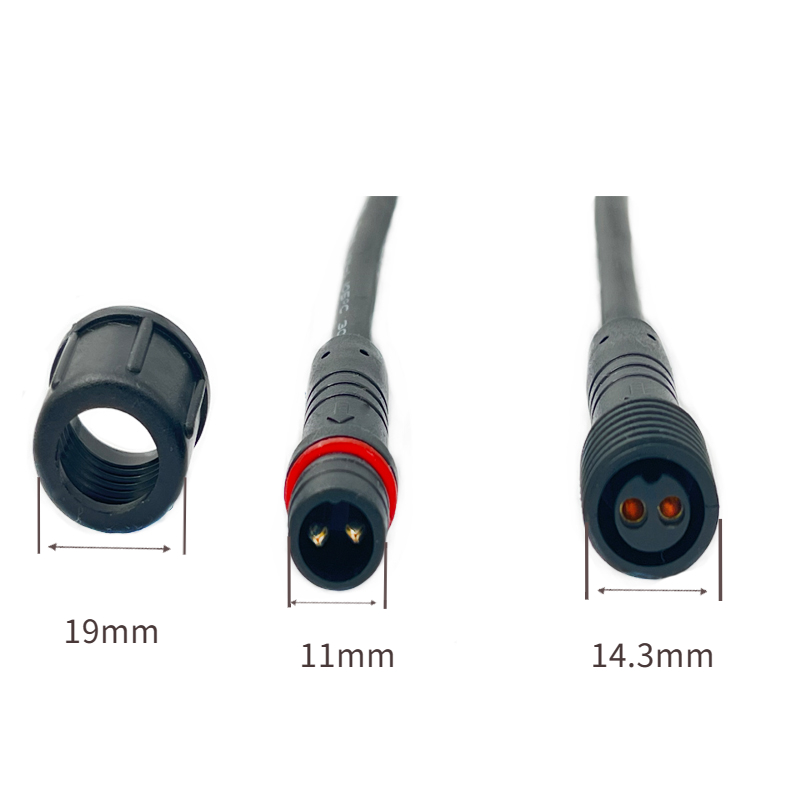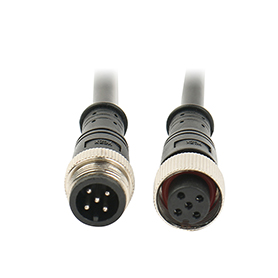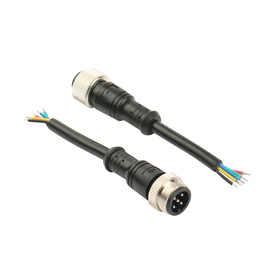News


News

Reliability and durability evaluation of waterproof electrical connectors
Release time:2024-11-09
viewed:430
Waterproof electrical connectors play a vital role in modern automotive electrical systems. They not only need to provide stable and reliable electrical connections under normal conditions, but also need to maintain high performance under extreme weather conditions. Therefore, long-term monitoring and evaluation of the reliability and durability of waterproof electrical connectors, as well as durability testing under extreme weather conditions, are key to ensuring the safe operation of automotive electrical systems.

Long-term performance monitoring and evaluation of waterproof electrical connectors is an important means to ensure their stable operation. This process involves continuous tracking and recording of the performance of the connector under various conditions to analyze its changing trends, predict potential problems, and take corresponding maintenance measures.
Monitoring content and indicators
In long-term performance monitoring, the following indicators are mainly concerned:
Contact resistance: Contact resistance is an important indicator for measuring the electrical performance of the connector. Its changes may indicate problems such as wear, corrosion or contamination inside the connector.
Insulation resistance: Insulation resistance reflects the insulation performance of the connector's insulating material. Its reduction may mean that the insulating material is aging or damaged.
Dielectric strength: Dielectric strength test can evaluate the connector's ability to withstand high voltage conditions to ensure that it will not cause safety problems in the event of an electrical failure.
Waterproof performance: By simulating rain, splashing water and other environments, the waterproof performance of the connector is tested to ensure that it will not cause electrical failures due to water intrusion.
Mechanical performance: Including plug-in force, separation force, etc., changes in these properties may indicate wear or deformation of the connector's mechanical structure.
Monitoring methods and technologies
Long-term performance monitoring can use the following methods and technologies:
Online monitoring: By installing sensors, the electrical and mechanical properties of the connector are monitored in real time to detect problems and take measures in a timely manner.
Regular testing: Regularly perform performance tests on the connector, including contact resistance, insulation resistance, dielectric strength and other tests to evaluate its performance changes.
Data analysis: Using data analysis technology, the monitoring data is processed and analyzed to identify the trends and laws of performance changes and predict potential problems.
Evaluation standards and processes
In long-term performance evaluation, certain standards and processes need to be followed to ensure the accuracy and reliability of the evaluation results. Evaluation standards usually include industry standards, enterprise standards and customer requirements. The evaluation process includes data collection, processing and analysis, performance evaluation, problem identification and diagnosis, and maintenance recommendations.

The durability test of waterproof electrical connectors under extreme weather conditions is the key to evaluating whether they can operate stably in harsh environments. Extreme weather conditions may include high temperature, low temperature, humidity, salt spray, etc.
Test content and indicators
In the durability test under extreme weather conditions, the following indicators are mainly focused on:
High temperature durability: Test the electrical and mechanical properties of the connector under high temperature environment to ensure that it will not deform or fail due to high temperature.
Low temperature durability: Test the performance of the connector under low temperature environment to ensure that it will not cause difficulty in plugging and unplugging or degradation of electrical performance due to material shrinkage or hardening.
Humidity durability: Test the waterproof and electrical performance of the connector by simulating long-term exposure to a humid environment.
Salt spray durability: Test the corrosion resistance of the connector in a salt spray environment to ensure that it will not cause electrical failures due to corrosion.
Test methods and techniques
The following methods and techniques can be used for durability testing under extreme weather conditions:
Environmental simulation test: Use an environmental simulation test chamber to simulate extreme weather conditions and conduct long-term exposure tests on connectors.
Accelerated aging test: Accelerate the aging process of connectors by increasing the temperature and humidity of the test environment to evaluate their long-term performance.
Real-time monitoring: During the test, real-time monitoring of connector performance changes, including contact resistance, insulation resistance, etc., is performed to evaluate its durability.
Test standards and procedures
Durability testing under extreme weather conditions needs to follow certain standards and procedures. Test standards usually include industry standards, corporate standards, and customer requirements. The test process includes preparation of the test environment, installation and commissioning of connectors, collection and processing of test data, and evaluation and analysis of test results.

Failure analysis is a key step in finding out the cause of connector failure and proposing improvement measures. Preventive measures are targeted measures based on the results of failure analysis to reduce or avoid connector failure.
Failure Analysis Process
The failure analysis process usually includes the following steps:
Description of failure phenomenon: Record the failure phenomenon of the connector in detail, including failure time, failure mode, environmental conditions before and after failure, etc.
Analysis of failure causes: Find out the cause of connector failure through physical inspection, chemical analysis, performance testing, etc.
Proposed improvement measures: Based on the analysis results of the failure cause, propose improvement measures, including design improvement, material replacement, process optimization, etc.
Verification of improvement measures: Verify the proposed improvement measures to ensure that they can solve the failure problem of the connector.
Common failure causes and preventive measures
Common failure causes of waterproof electrical connectors include:
Poor contact: The connector has poor contact due to insufficient contact area, contact surface contamination or corrosion. Preventive measures include increasing the contact area, optimizing the contact design, and improving the corrosion resistance of the contact material.
Insulation failure: The insulation performance of the connector decreases due to aging, breakdown or damage of the insulating material. Preventive measures include selecting high-quality insulating materials, improving the heat resistance and corrosion resistance of the insulating material, and strengthening the protection of the insulating layer.
Mechanical damage: Mechanical damage to the connector is caused by reasons such as excessive plugging and unplugging force, too many plugging and unplugging times, or unreasonable mechanical structure of the connector. Preventive measures include optimizing the mechanical structure of the connector, improving the adaptability of the plugging and unplugging force, and strengthening the mechanical strength of the connector.
Environmental factors: Environmental factors such as extreme weather conditions, chemical corrosion, and water intrusion may also cause connector failure. Preventive measures include strengthening the waterproof, dustproof, and corrosion-resistant capabilities of the connector, and improving the durability of the connector under extreme weather conditions.
Continuous optimization of preventive measures
Continuous optimization of preventive measures is the key to ensuring the long-term stable operation of the connector. This includes:
Regular evaluation: Regularly evaluate the design and production process of the connector to identify potential problems and improvement points.
Technological innovation: Continuously introduce new technologies and new materials to improve the performance and reliability of the connector.
Customer feedback: Actively collect customer feedback, understand the use of the connector, identify problems in a timely manner and take measures.
Training and education: Strengthen technical training and education for employees, improve their technical level and quality awareness, and ensure the production and use quality of the connector.

The reliability and durability evaluation of waterproof electrical connectors is the key to ensuring their stable operation. Through long-term performance monitoring and evaluation, durability testing under extreme weather conditions, and failure analysis and preventive measures, problems can be discovered and solved in a timely manner to improve the performance and reliability of connectors. In the future, with the continuous advancement of technology and the continuous changes in the market, we need to continuously innovate and optimize evaluation methods and preventive measures to adapt to new challenges and needs.